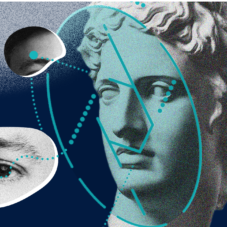5 peculiar cases of identity theft and how they could have been prevented

The digital age has opened up new, easily accessible avenues for ID fraud. Poorly protected public and private databases are a treasure trove of information like Social Security numbers, names, addresses and even credit card data. These are then resold in shady web forums. From there, fraudsters can create counterfeit IDs with real-world data, that are able to withstand routine checks.
The trouble really ensues when someone borrows money or signs a contract under a false identity – at which point the real identity owner can get into a lot of trouble, without knowing why.
The constant increase in remote access to services opens up new possibilities of such attacks, however, biometrics can prevent them even more reliably than in the case of real-life ID checks.
Read about some of the more unusual cases of identity theft that have really happened, and the impact they’ve had on the lives of the involved parties.
ABIS
Automated Biometric Identification System Tailored to Your Needs

Innovatrics ABIS is a biometric identity management system supporting fingerprint, iris and facial recognition. Fast and accurate performance is achieved with minimal hardware requirements.
Hacking medical identities; or, how bad it can get from leaving your wallet in the car

A case of Andorrie Sachs (2006)
Andorrie Sachs, a mother of four children, had left her wallet in a car which was later broken into, and her wallet stolen. The thief turned out to be a pregnant woman who was, on top of all else, a regular meth user. Having Sachs’ driver’s licence and other papers enabled her to steal Sachs’ medical identity, and she delivered her baby in Sachs’ name, abandoned her child at the hospital and left Sachs with a $10,000 hospital bill. Afterwards, the local authorities then mistakenly reported Sachs as an unfit mother and threatened to take her four children away.
The implications of this could also continue to hurt Sachs throughout her life. The perpetrator had a different blood type to Sachs, and uncorrected co-mingled medical records could therefore result in Sachs’ death if she ever needed a blood transfusion. A healthcare provider might even prohibit her from reviewing her own medical records because they might not be in her name.
Biometrics can prevent the hacking of medical identities
Hospitals hold some of your most sensitive information. Scanning your fingerprint at the reception desk and live-pairing your identity to your medical record via ABIS (Automated Biometric Identification System), could be the fastest and most secure way to verify your identity. Even in cases when a patient is brought to a hospital in a state of unconsciousness, the scanning of fingerprints could easily be applied, and with minimal hardware requirements.
SmartFace Platform

SmartFace detects and tracks faces in parallel video streams from multiple IP cameras without compromising speed and accuracy. The power of our high quality facial recognition algorithms supports any instant identification scenario for access control, surveillance, video investigation, and other purposes.
Stealing one’s own daughter’s identity can be easier than ever thought

A case of Wendy Brown (2008)
This is a case of a 33-year-old woman who blamed her regrets of the past for her decision to commit identity fraud. Wendy Brown joined the school cheerleading team by using the ID of her daughter. It was stated that Ms Brown admitted in Court later on that, “She wanted to get her high school degree and be a cheerleader because she hadn’t had a childhood and was trying to regain a part of the life she had missed.”
For several days, no one in the school noticed, and it was only when she was arrested by police that the mother’s attempt to re-live the life of a teenager was realised by those at the school. Perhaps out of politeness, no one had questioned Brown’s older looks as she had the demeanour of a teenager. In the end, Brown avoided imprisonment and other charges as she was confirmed to be suffering from mental illness.
Misusing IDs can be a thing of the past
In some cases, ID cards are not enough to verify someone’s identity, just as in the case of Wendy Brown. A human’s performance and perception is influenced by distraction, time pressure, workload, competence, morale and other such factors, and it is quite impossible for a human to consistently manage all these factors with 100% accuracy. In cases similar to this one, despite this event being more about an unfulfilled dream than a malicious fraud, technology could help prevent it. SmartFace Platform can estimate age and gender, it can detect and track multiple faces in one video frame, and it can identify people accurately, even with a face mask or sunglasses on.
DOT
Digital Onboarding Toolkit

Consisting of mobile and server components, DOT can authenticate and extract data from identity documents, verify identity using facial biometrics, and detect liveness of an individual.
One of history’s most famous pretenders claimed Russian throne

A case of False Dmitry I (at the turn of 16th and 17th Century)
In 1591, Tsarevich Dmitry was assassinated at the age of eight. Years later, Grigory Otrepyev (False Dmitry I) came forth, claiming that he was actually Tsarevich Dmitry – having survived the assassination plot.
False Dmitry I persuaded people of his lie by explaining that his grandmother was aware of the assassination plot against him, and had placed him into the care of a doctor who helped Dmitry live safely in monasteries throughout Russia until his imminent return. And it was believed by many – after all, he turns out to have been a charismatic, well-educated warrior prince who was revered by many of his subjects.
False Dmitry I leveraged this story to gain supporters in Poland and Russia so as to eventually invade Moscow in the hopes of reclaiming “his” throne in 1604. He became the Tsar of Russia from 1605 until 1606, when he and his supporters were assassinated for their treason.
No papers needed for personal identification
Today, claiming a throne just by your looks and words wouldn’t be nearly so straightforward. Innovatrics Digital Onboarding Toolkit (DOT) can authenticate and extract data from identity documents, verify identities using facial biometrics, and detect the liveness of an individual’s data. False Dmitry I would not manage to con anyone about his true identity, despite having no documents to hand.
Biometrics
for OEM Solutions

Top-Ranked Fingerprint Matching and Facial Recognition Algorithms Portable to Any Hardware
Innovatrics OEM Embedded Solutions are based on powerful algorithms with intentionally low footprint. They can be ported easily on any hardware.
Hacking bank accounts; or, how bad it could get from swiping your card at a shopping mall

Case of Amar Singh and his wife (2017)
Married couple Amar Singh and his wife Neha Punjani-Singh pleaded guilty in a case of a $13 million scam. They stole people’s credit card information and sold fake cards to benefactors – people who then used the information to shop around the world. These shoppers allegedly used the fraudulent cards to stay at five-star hotels, rent high-end cars, and even rent a private jet. The attackers (Singh) used a skimming device to steal the customers’ info when they swiped their cards at retail or food establishments. Singh, who originally faced up to 250 years in prison for the crimes, was ultimately sentenced to less than 12 years.
Fingerprint cards prevent someone shopping in your name
Due to easy portability, Innovatrics algorithms can easily be embedded into smart devices in IoT ecosystems. OEM Solutions are small area sensors embedded in credit cards, with the possibility of being in many other devices, that will prevent strangers renting private jets in your name.
Faking death in order to flee from paying debts

A case of Elizabeth Greenwood (2013)
Elizabeth Greenwood orchestrated a “pseudocide” in the form of a fatal car crash in the Philippines, so as to escape debit payments in her home county, the USA. Many students struggle to figure out how they will pay off what they owe, and Elizabeth Greenwood was one such example, owing over $100,000.
Contemplating how she could slip through the cracks, faking her own death turned into a years-long project. She eventually obtained a fake death certificate on the Philippine black market, saying she died in a car crash in 2013. Technically and on paper, she was dead, but in reality she was still living in Brooklyn. A fun fact is, that in 2017 she even wrote a book, called Playing Dead, about how to fake death and continue living unnoticed.
Preventing shopping around the black market
In some countries, national registration departments have already added biometric information to identity documents. It takes time to fully evaluate the legal aspects and develop policies, but the changes are part of a broader plan to improve civil records. ABIS biometric identity management system supports fingerprint, iris and facial recognition. With biometric information written in your birth certificate, faking death would no longer be the best plan in terms of how to flee paying one’s debts.

Automated Biometric Identification System Tailored to Your Needs
Innovatrics ABIS is a biometric identity management system supporting fingerprint, iris and facial recognition. Fast and accurate performance is achieved with minimal hardware requirements.
ViewAUTHOR: Barbara Rusnáková
PHOTOS: Alamy, Unsplash









